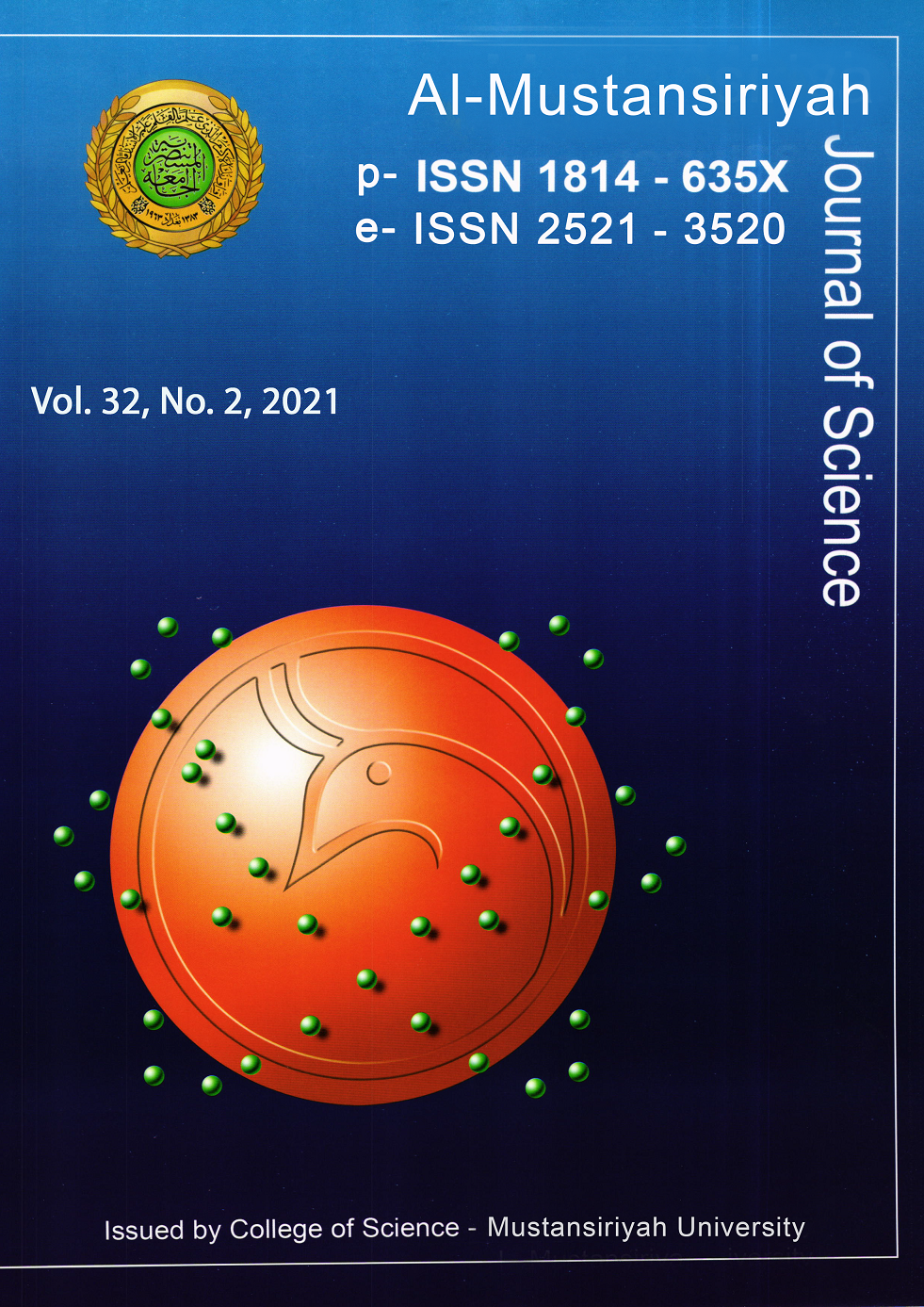A multimedia Environmental Model to Predict the Lead Concentration in Children’s Blood Near Al-Dorah Refinery in Baghdad
DOI:
https://doi.org/10.23851/mjs.v32i2.981Keywords:
IEUBK, Lead pollution, Blood lead level, Soil contamination, Risk assessmentAbstract
Lead-contaminated water, soil, and air have been perceived as potential sources of lead exposure for a considerable length of time, which continues to threaten human health; particularly that of young children. An Integrated Exposure, Uptake, and Biokinetic (IEUBK) as a human health risk model were applied to predict the Blood lead levels (BLLs) in children. A variety of data for air, soil, and water were obtained from the industrial region in Al-Dorah city in Baghdad for the period 2012- 2014. The result found that the predicted BLLs value of 11.17 μg/dL obtained from the IEUBK model was exceeding the agency’s threshold of concern of 10 μg/jdL which was considered as the lowest level of concern for BLL in children, this result of the IEUBK model was in agreement with the actual value of BLLs which were taken from previous literature for 24 blood samples of school children matched for age curried out in the same Al-Dorah region. This technique propels logical comprehension of the connection between BLLs in children and environmental media in both air and soil for the pollute condition. It can control national health-based benchmarks for lead and related community public health decisions.Downloads
References
J.H.Choi, C.J.Damm, N.J. O'Donovan, R.F. Sawyer, C.P. Koshland, D. Lucas. "Detection of lead in soil with excimer laser fragmentation fluorescence spectroscopy". J. Appl. Spectrosc.. 2005; (59): 258-261
A.K. Al Lami, M. A. Sultan, A. Al Maliki, A. A Ajeel. "IEUBK Model to Calculate the Lead Concentration in Blood Children of the Environment Which Effect by Lead Emission: Empirical Comparisons with Epidemiologic Data: Developing a Human Health Risk Model to Quantify the Risk Posed by Soil Pb". Al Nahrain J. Sci. 2018; (1): 52-59. Available from: https://anjs.edu.iq/index.php/anjs/article/view/2013
WHO (World Health Organization). Exposure to Lead: A Major Public Health Concern. Geneva, 2010.
A.Al Maliki."Reflectance spectroscopy and spatial distribution modeling of soil lead concentrations and implications for human health". Ph.D [Thesis]. Adelaide: University of South Australia; 2015.
B. Gulson, A. Taylor."A simple lead dust fall method predicts children's blood lead level: New evidence from Australia", J. Env. Res. 2017. 159: 76-8.
A.M. Zearley. "Incorporating Diet into In Vitro Bioaccessibility Assays to Improve Prediction of Bioavailability of Soil Pb in Birds and Humans", M.Sc Thesis. The Ohio State University.2018.
J.Rasmuson, E.Rasmuson, R.Olsen, H. D.Hall, R.Strode, D.Larson, A.Korchevskiy. "Application of a Bio-Kinetic Model (IEUBK) to Estimate the Effectiveness of Different Soil Remediation Scenarios for Lead Contamination in Shymkent, Kazakhstan", ХАБАРІІІЬІ, 2012, 4 (61), pp 3-9
USEPA (U.S. Environmental Protection Agency). Regulated drinking water contaminants. 2015. Available at: http://www.epa.gov/dwstandardsregulations
Z.N.Eyada. "Physiological effects of lead on the blood of some worker and its binding with some prepared chelating agents", Al Nahrain University, MSc thesis, Baghdad, 2016.
A. Al-Rekabi, R. Al-Mashat. "Estimation of lead levels in human blood and marshes water in south of Iraq. Iraqi J. cancer Med. Genet. 2013. 6 (2): 154-158.
M.R. Garry, S.S. Shock, J. Salatas. "Human health risk assessment of metals exposure through subsistence foods consumption and subsistence harvest activities near a mining transport road in northwest Alaska". Hum. Ecol. Risk Assess. (2020),DOI: 10.1080/10807039.2019.1706151
V. Zartarian, J. Xue, R. Tornero-Velez, J. Brown."Children's Lead Exposure: A Multimedia Modeling Analysis to Guide Public Health Decision-Making". Environ. Health Perspect. 2017. 125(9):1-10. https://doi.org/10.1289/EHP1605
USEPA (United States Environmental Protection Agency). Sampling Manual for Ieubk Model. EPA Work Assignment No. 45-8HZZ. 1996.
B.A. Mahdii, A.J. Mohammed, S.A. Mahdii, A.N. Ajaweed. "Investigation of the Drinking Water Quality of Some Residential Areas in Baghdad City - Karkh District, Iraqi" Journal of Science. 2016. 57: 78 -97.
B. K. Hassan. "Measurement of Lead Pollution on Air, Humanbeing. Soils and Plants on Dorah Regoin in Baghdad City". J. Al Taqani, 2012. 25 (2): 1-11.
A.T. Abu-Timman. "Lead Absorption Among Children in Baghdad". M.sc thesis, Baghdad University. 1988.
WHO. Guidelines for Drinking-water Quality. WHO Library Cataloguing-in-Publication Data. 4th ed Incorporating the First Addendum. 2017. Switzerland. ISBN 978-92-4-154995-0
K. Hogan, A. Marcus, R. Smith, P.White. "Integrated exposure uptake biokinetic model for lead in children: empirical comparisons with epidemiologic data". Environ. Health Perrspect. 1998. 106(6): 1557-1567.
Downloads
Key Dates
Received
Accepted
Published
Issue
Section
License
Copyright (c) 2021 Al-Mustansiriyah Journal of Science

This work is licensed under a Creative Commons Attribution 4.0 International License.
(Starting May 5, 2024) Authors retain copyright and grant the journal right of first publication with the work simultaneously licensed under a Creative Commons Attribution (CC-BY) 4.0 License that allows others to share the work with an acknowledgement of the work’s authorship and initial publication in this journal.






















